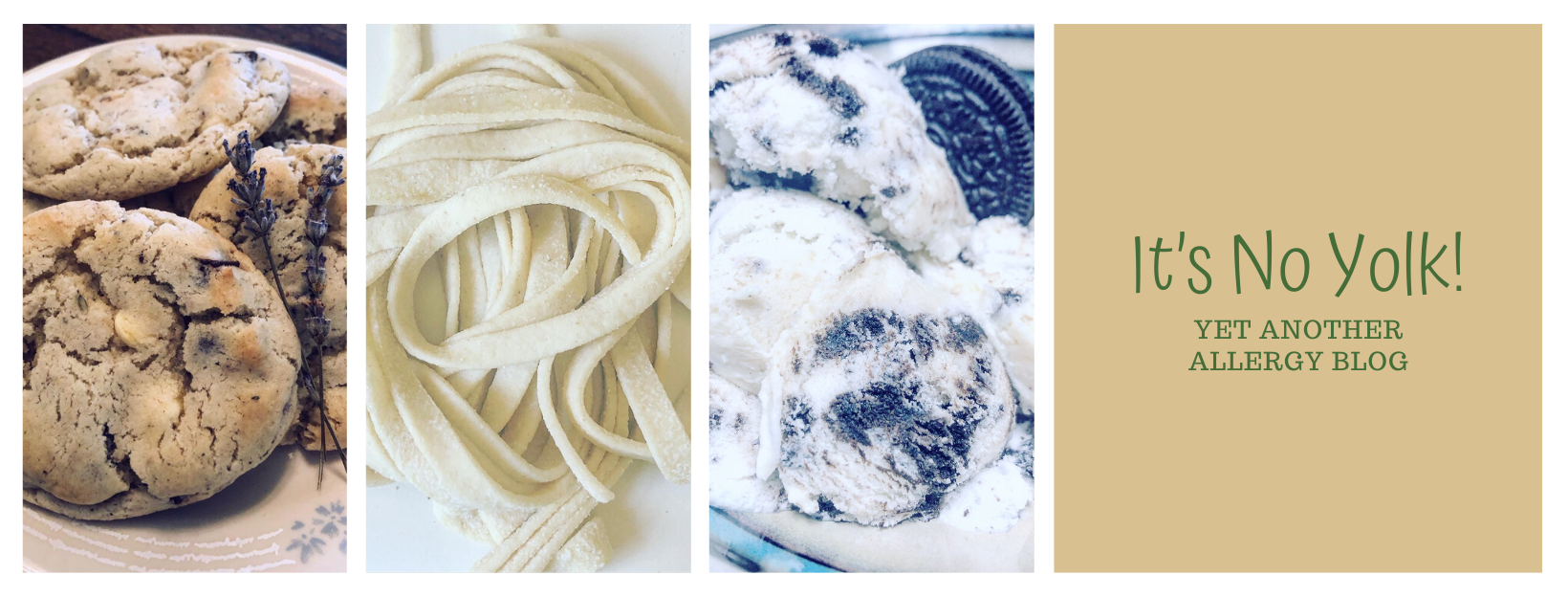Once I knew I was allergic to eggs, I started to become fascinated by them. I never realized how many different ways eggs can be used in food. They have so many applications in cooking and in baking. Not only that, but you can also use the parts of an egg separately. Egg whites are great for making fluffy meringues and tasty macarons. The yolk makes for creamy custards and rich ice creams.
But why do those parts do what they do?
I believe that understanding the answer to this question is the first step in replacing egg yolks when baking. If we can learn why the egg yolk has the effect it does on cookies and cakes, then we can do the same thing to our recipes without an egg yolk.
I ran into these questions about the egg yolk when making my lavender cookies. My search for a replacement is what inspired this post.
What does the egg yolk even do?
In order to figure out a replacement for something, you have to first know what it does. I had no clue why people put an extra egg yolk in recipes. Some blogs mentioned that they added an egg yolk to increase the richness of the food, but I couldn’t figure out why. Thanks to some amazing writing by Baker Bettie, I was able to get some answers!
The egg yolk is the part of the egg with all of the fats. Increasing the level of fat in a recipe will directly impact the richness of the final product. Seems pretty straight forward, right? However, there is more to the egg yolk than just fat. The yolk actually works as an emulsifier in baking.
What’s an emulsifier?

In baking, an emulsifier is an ingredient that helps combine the batch into a smooth finished product. It helps create what’s called a homogeneous mixture – which is just a fancy way of saying that everything is combined uniformly.
For example, if you try mixing oil and vinegar they don’t naturally combine. In science, we call this mixture an emulsion. But, if you add an emulsifier, it breaks up the emulsion and allows everything to mix together! In the oil and vinegar example, a good emulsifier is baking soda.
Pretty interesting, right?
And the answer is…. *drum roll*
If you followed my logic in the previous section, you won’t be surprised by the answer I discovered. Baking soda, a common ingredient in baking besides, is an emulsifier. It will help do the job that the egg yolk is not there to do.
You may be asking, “But, Emily, if baking soda is already in my recipe, why would I add more? How do I go about adding more without that causing other reactions in my batch?”
Those are valid questions. For my answer, I will point to my example in the previous section. Baking soda works as an emulsifier when mixing oil and vinegar. Whether you’re adding oil, butter, or both to a recipe, you have 50% of the example already in your mixing bowl. The key, I’ve found, is to mix baking soda and vinegar together and then add it to the bowl with the oil.
Mixing baking soda and vinegar makes its own reaction. It bubbles up a lot, which has an added bonus as a leavening agent. This gives your baked goods extra body, while also providing the smooth richness you get from an egg yolk.
Adding baking soda alone isn’t enough. The key here is mixing it with vinegar to create the emulsion and add the emulsifier simultaneously. I’ve found that combining 1/2 teaspoon of baking soda and a tablespoon apple cider vinegar is the equivalent of about on egg yolk.
Conclusion
The combination of oil, vinegar, and baking soda succeeds in homogenizing your batter while also providing the lift your baked goods would get from regular eggs. It’s pretty cool science!
I was so excited to figure out why this worked! If anything, this has been my favorite part of my allergy. It’s strange to think of it that way, but the fact that it has opened me up to new questions and experiments is something for which I’m really thankful. As we head into Thanksgiving, I think it’s really important to reflect on how we can be thankful for the challenges we face. This allergy has been many different kinds of hinderances and inconveniences, but it’s also created opportunities for learning and innovation.
This post was little more science-based than my previous ones. Did you like it? Let me know! I look forward to hearing from you about other things you’re interested in learning about egg allergies. If there’s anything else you’d like me to try and figure out, I’m all in!
Thanks again, as always, for taking the time to read this! I hope to hear from you soon!
